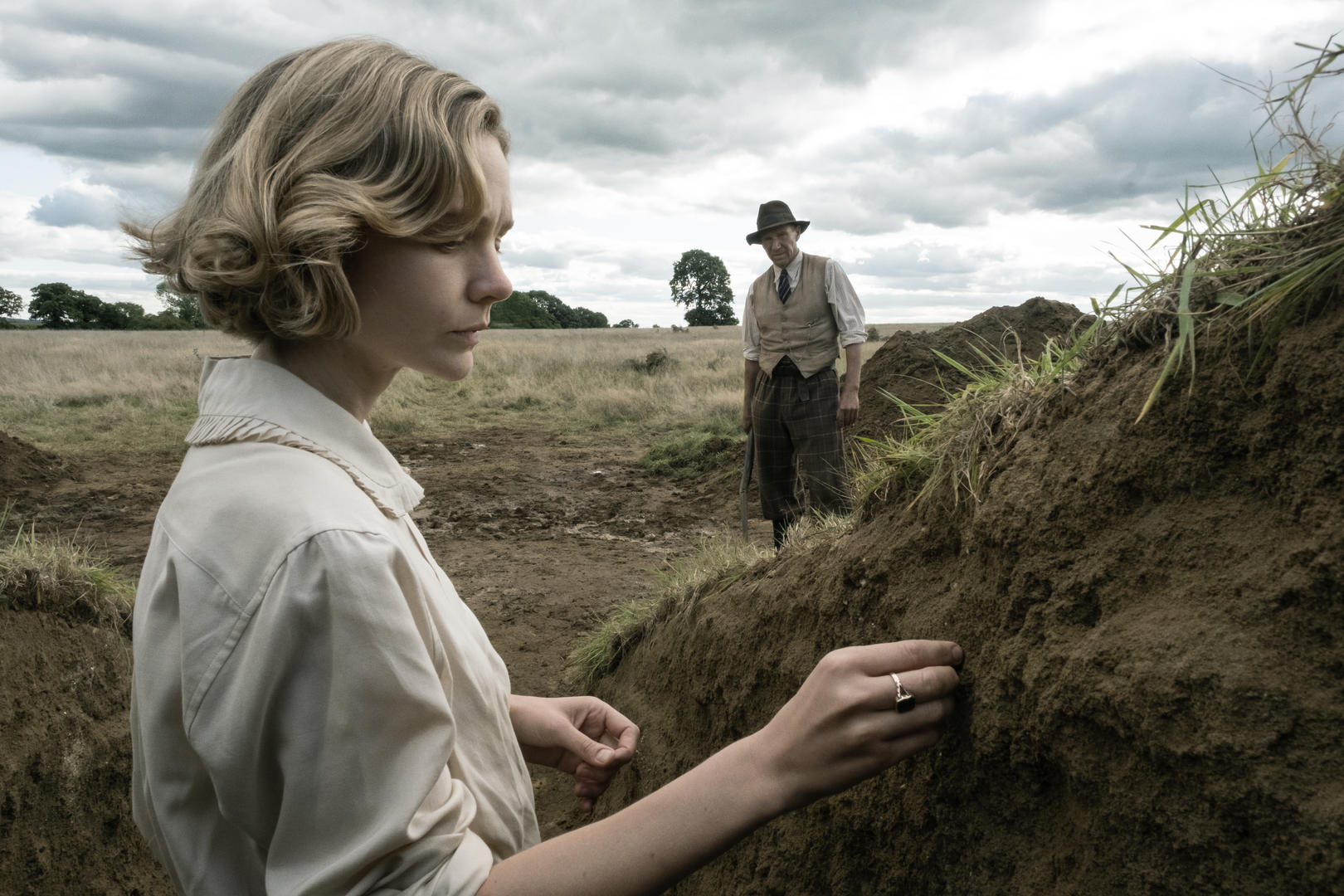After finishing The Dig the word ‘wholesome’ sprung to mind. Very much a British film, both in style and substance, I was reminded of other British films from the previous decade, specifically Salmon Fishing in the Yemen and The Theory of Everything. There are no striking similarities between these films apart from their ‘feel’: wholesome and quintessentially British. Above and beyond all its other successes, The Dig succeeds so well in creating a ‘feel’ to it: honest but at the same time, cinematic. It’s a shame we won’t get to see it on the big screen.
Based on John Preston’s 2007 novel of the same name, The Dig was directed by former theatre director Simon Stone, written by Moira Buffini (think ‘Tamara Drewe’ or ‘Viceroy’s House’) and stars Carey Mulligan, Ralph Fiennes and Lily James. It has a historical/biopic texture to it and details the events surrounding the 1939 archaeological excavation (the dig) of Sutton Hoo, set in a backdrop of imminent world war that would soon engulf the nation.
Immediately I noticed a brilliant soundtrack that lay well with vivid cinematography, perfectly capturing sunny, luscious, green England. The set was stunning and carefully constructed: scenes of a couple sadly kissing with the knowledge of the coming war, old fashioned pubs with tankards of ale, pipes and tartan suits and ties.
It was slightly disconcerting watching Fiennes without his typical posh accent, but his performances as underappreciated excavator Basil Brown was superb. Carey Mulligan was also a pleasure to watch, as was seeing Lily James venture out of her comfort zone, in a role that reminded me of Keira Knightley’s in The Imitation Game. Also, it was relieving for once to watch a kid in a film who isn’t annoying!
And it feels like the reasons for making this film were virtuous, noble even. Basil Brown, a working-class autodidact, passionate yet humble, looked down upon by his well-educated, upper-class colleagues didn’t receive any credit for his ground-breaking work at the time. Finally now, through the bastion of cinema, he has received the recognition he always deserved.
One particular feature of the film that deserves a special mention was the use of a totally different cinematic language at times. You hear the dialogue well before it starts on the screen, and you watch the fumbling awkwardness of the characters as they set about expressing themselves. This feature is often not seen in cinema; the revelation that interactions are often painfully silent and even difficult for some… It provided us as viewers with far more information than would a conventional display of dialogue matched to lips. I’ve never seen anything quite like it and loved it!
I doubt this film will be regarded as one of the best releases of 2021. True, the cast was magnificent, as was the direction and filming, but the story itself will most likely strike the average viewer as a bit boring. And having read about the real Sutton Hoo excavation online, I quickly noticed a few historical inaccuracies. However, I can brush these aside for the sake of entertaining cinema.
It is a testament to this film that it manages to turn something as tedious as an archaeological excavation into fiercely interesting cinema. Its feel-good vibe, beautiful scenery and historical significance are some of the wide-ranging reasons why I could watch this film on repeat and not get bored.
Image Credit: Indie Wire

